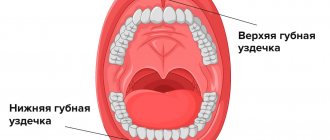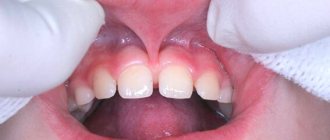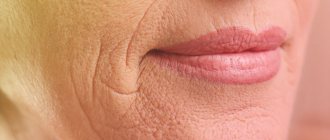Breast complications after enlargement or side effects
Many women who dream of enlarging their breasts or changing their shape are hesitant to do so, fearing possible complications after surgery. For them, a beautiful bust remains a dream...
Of course, there are complications after breast surgery; there is no point in denying this fact. For various reasons, complications occur after any surgical intervention, including after augmentation mammoplasty. But, as statistics show, if all the surgeon’s instructions are followed, complications after mammoplasty occur much less frequently than after other surgical interventions. If the percentage of negative consequences were high, aesthetic breast surgery would already be banned.
Whether complications will appear is determined by a number of reasons: anatomical features, previous surgeries, plastic surgery techniques, the body’s reaction directly to the operation and endoprosthesis, and, naturally, how accurately all the doctor’s instructions are followed during the rehabilitation period. You need to know that the implant remains in the required position for a long time only due to the elasticity of the surrounding soft tissues, which were injured during the operation. Only after 2-3 months, when inflammation subsides, a connective tissue layer forms around the implant, which will securely secure it in the surrounding soft tissues. That is why during the first months after breast plastic surgery it is necessary to wear compression garments and follow all the instructions of the surgeon who performed mammoplasty.
How is lipofilling performed?
This procedure is considered low-traumatic, since small punctures, rather than large incisions, are made to access the working area. Minimal damage to blood vessels and tissues promotes rapid recovery, thereby reducing the rehabilitation period. Moreover, this correction does not even require stitches.
The first stage of the operation is the collection of fat cells. Then the removed fat is cleaned in a centrifuge from foreign impurities and filtered. Finally, the surgeon makes punctures in one of the following places:
- in the armpit,
- between the areola and the nipple,
- in the fold under the breast.
Using a special cannula with a rounded end, which minimizes tissue trauma, fatty tissue is injected into the corrected area. The advantage of lipofilling is that it can be combined with liposuction, that is, several problem areas can be corrected simultaneously during one operation.
Breast complications: what are side effects
By the way, not everything that happens to the mammary glands in the postoperative period is complications. There are direct complications that do not necessarily have to happen, and standard side effects that go away over a different period of time.
Side or undesirable effects of surgical intervention are usually called symptoms that appear in the operated area always and in everyone. These undesirable effects arise from tissue trauma and will certainly subside as the wound heals. But the rehabilitation period can last different times for different people - this is determined by the individual characteristics of the body.
The inflammatory process is a natural and mandatory response of the body to any wound or injury necessary for tissue regeneration. This reaction occurs even if there is no infection - this is aseptic inflammation.
Breast complication photo
You can see many excellent results without complications after mammoplasty here.
Preparing for surgery
Before surgery, you need to consult a doctor in person. The doctor will examine you, discuss possible plastic surgery options and choose the optimal technique for the desired result. At the consultation, Philip Nikolaevich will tell you how plastic surgery and rehabilitation will take place, what examinations you need to undergo, and what the final cost of the procedure will be. The standard list of examinations includes:
- Ultrasound of the mammary glands and blood vessels of the lower extremities;
- blood and urine tests;
- ECG,
- fluorography.
How complications appear after breast augmentation or other mammoplasty
After any surgical operation on the chest, the following local undesirable effects occur:
- Edema – forms by the end of the first day after surgery and gradually increases, reaching its maximum size by 3-5 days. For 2-4 days the swelling remains unchanged, and then slowly subsides. In the 3-4th week after surgery, the swelling goes away, but from time to time it can appear again: in the second period of the monthly cycle, after eating salty and spicy foods, after drinking alcoholic beverages, as a result of high physical activity. That is why only 3-4 months after mammoplasty you can see its final result.
- Consequences of vascular damage: bleeding, bruises, hematomas. They can appear immediately after surgery, or only after a few days, gradually becoming noticeable against the background of swelling. The bruises disappear within a week. Hematomas take a little longer to disappear, and this period largely depends on their size.
- Redness in the suture area (in spots or in the form of “marbling”) that occurs during the first days goes away within 2-3 days. If intense redness appears later, it means that an infection has occurred and must be treated separately.
- Discomfort or pain that occurs with varying degrees of intensity. How much pain is felt is determined by each individual's pain threshold. But in any case, the pain is felt more strongly after surgery, which is accompanied by detachment of the pectoralis major muscle. Discomfort and pain can last 3-7 days, but they are removed with the most basic painkillers.
- A change in sensitivity, and it can either increase or decrease. There are a huge number of nerve endings in the soft tissues of the breast, especially near the nipple. They may be injured during surgery or compressed by swelling later. Sensitivity is sure to be restored 3-6 months after surgery.
- Formation of a postoperative scar at the incision site. You need to ensure that the seams remain dry and treat them with a solution of potassium permanganate for the first 7-10 days. Later, starting from the 3-4th week, the healed sutures should be lubricated with silicone ointment (Dermatix, Kelokot) or covered with an adhesive plaster "Mepiform". This must be done for 3-4 months until the seams become pale.
Let's take an example of what happens to the simplest wound, for example when a finger is cut. Even a very small wound heals in 7-14 days - the longer it is, the deeper and larger it is in area. There will be inflammation in any case: redness, swelling, possible bruising or discharge, and, of course, pain. Then there is a slow cleansing and healing of the wound, and in the center there will be a scar (a section of connective tissue) - it will form if the epidermis does not have time to “come together”. Marginal epithelization - the so-called regeneration of the upper layer of skin - can be 5 mm. If the damage occupies a large area, then a scar will necessarily form, since connective tissue cells are more active and divide more quickly. At first, the scar is very dense and bright red in color, sensitivity in this place is impaired (it is stronger or, conversely, less). Little by little, the scar becomes pale and decreases in size, it becomes softer - this is how it “ripens”, and over time it is completely or almost invisible. You need to know that if you sunbathe while the scar is bright red, it will become pigmented. Perhaps over the course of 1-3 years the pigment will lighten, or perhaps not - it may remain forever. This sequence of the recovery process (healing of any wound) is absolutely natural and normal. But if there are disturbances in the functioning of the connective tissue and immune system in the body, hypertrophic and keloid scars form.
Breast complications: what are complications after breast augmentation
Complications after surgery are manifestations that arise in the postoperative period and are the result of an operation or an atypical reaction of the body to a foreign body (implant). The development of complications is not a natural process at all.
Reasons that can lead to the development of complications after breast surgery: 1. Pathological reactivity of the body, that is, individual characteristics present in any organism. 2. The body's response to the endoprosthesis, which is a foreign body. 3. Previous surgical operations. 4. Failure of the patient to comply with the time limits for wearing compression garments. 5. Failure to comply with the rules of taking medications, diet, and lifestyle prescribed by the doctor.
Reviews about the procedure
Despite the possible consequences, lipofilling is still a popular and safe procedure. After reading reviews of women who have undergone this procedure, you can be convinced of the advantages of this technique. These are natural forms and aesthetic breast enlargement, long-lasting results, simple rehabilitation. For a visual acquaintance, you can look at the before and after photos.
However, augmentation with implants also has a number of advantages and good reviews. The price of lipofilling and augmentation with implants is not too different, so you can choose the optimal method. But remember that the method of breast augmentation is chosen only together with the surgeon based on your personal characteristics, desires and health status.
Types of complications after breast augmentation
List of complications that may arise after breast surgery:
- A hematoma forms when, due to bleeding from damaged vessels, blood accumulates in the soft tissues surrounding the implant. The appearance of a hematoma in the early postoperative period can be triggered by a rise in blood pressure, it can appear due to blood clotting disorders or diabetes mellitus. To prevent the formation of a hematoma, drains are placed in the implant bed - they must drain fluid on the first day after surgery on the mammary glands. At a later date, the formation of a hematoma can be caused by premature cessation of wearing compression garments, violation of the regimen recommended by the doctor, high physical activity, and having sex in the first postoperative days. Since the hematoma can result in displacement of the implant, it must be eliminated - for this it is necessary to perform a puncture and aspiration, and sometimes a revision of the postoperative wound.
- Infection of a postoperative wound is manifested by high body temperature, increased swelling, redness around the suture, and pain. Antibiotics are administered during surgery as a preventative measure.
- Seroma is the accumulation of tissue fluid around implants. It occurs due to the dissolution of a voluminous hematoma or the reaction of soft tissues to the implant. Since seroma can become infected or lead to displacement of the implant, it must be removed - usually this is done by aspiration or drainage.
- Rotation or displacement of the implant can occur due to a nearby hematoma or accumulated seroma, as well as due to violation of the regime. The consequence of implant displacement is a change in the shape of the mammary gland. To correct the situation, an operation is needed, but it can only be done 3-6 months after the previous one.
- Allergies that occur to silicone implants are extremely rare.
- A large postoperative scar (hypertrophic or keloid) is a rough, thick and clearly visible scar. Such a scar can form if the patient has a genetic predisposition to this - a tendency to hypertrophy (thickening). To eliminate hypertrophic or keloid scars, additional treatment is required, and preventing their appearance is much easier: when the wound heals, you need to use compressive bandages, drying antiseptics and healing drugs.
- Waviness, ripping, ripples, contouring of the edges of the implant - these are all names of one type of complication, in which the implant becomes “wavy”, and its contours are clearly visualized. Contouring and waviness may be noticeable when the breasts are in a relaxed position or only during movement or when the torso is bent over. This type of complication most often appears in thin women with a small volume of integumentary tissue and poorly developed breasts if they have had an endoprosthesis with a soft gel installed. To remove ripping, you need to do a second operation and install an anatomically shaped implant with a dense gel filler or polyurethane coating, and at the same time do lipofilling.
- Secondary breast ptosis. If natural causes lead to the appearance of primary ptosis, then mammoplasty leads to the formation of secondary ptosis. The fact is that the chest, as a part of the body that is in a suspended state, is affected by gravity: the greater the weight, the stronger the force of gravity. Secondary ptosis requires surgical correction.
- “Ball in sock” or accelerated development of secondary ptosis. The occurrence of secondary sagging often occurs if the implant is located under the mammary gland, especially if the original ptosis was present before mammoplasty. After increasing the volume and weight of the breast, it quickly descends along with the endoprosthesis. The situation can be corrected by performing a second operation: you need to reinstall the implant under the pectoralis major muscle and perform a breast lift using a prosthesis.
- Prosthesis ptosis (bottoming out) – sliding of the implant down the chest wall. If during implantation the submammary fold is destroyed without its subsequent fastening, the implant may descend below it and slip out. And the breast will remain in its original state.
- Rupture of the implant shell is an extremely rare occurrence and can be caused by trauma to the chest. If the rupture is spontaneous, that is, it occurs without an external message, the manufacturer provides a new implant free of charge. Absolutely all companies producing silicone endoprostheses provide them with a lifetime warranty.
- "Double bubble" After augmentation mammoplasty, a transverse stripe is formed on the lower slope of the breast - this is the appearance of the previous submammary fold, preserved after breast reduction. This defect can be eliminated by performing lipofilling and rigototomy at the same time, or by performing a repeat operation.
- “Waterfall” (snoopy or waterfall deformity) is a complication in which soft breast tissue slides off a fixed implant. A “waterfall” may occur if there was initially increased stretching and a large volume of soft tissue and the prosthesis was installed under the pectoralis major muscle. To eliminate this defect, it is necessary to perform a second operation, and it is possible to use a larger implant and shift it to a lower position, as well as a breast lift on the implant.
- Breast fusion or sinmastiya can occur if an endoprosthesis that is too large was used or if the surgeon wanted to reduce the interbreast space too much. Synmastia can be eliminated only during a repeat surgical operation, narrowing the implant bed and installing a smaller prosthesis.
- “Tomato breast” is a flattening of the breast cone, shaped like a tomato. Such deformation can occur after periareolar lifting with endoprosthetics.
- Excess skin in the area of the submammary fold after vertical mastopexy with endoprosthetics.
- Fibrous or capsular contracture. Naturally, the implant is perceived by the body as a foreign body, and the body creates a protective layer of connective tissue around it. This is the fibrous capsule. After the installation of endoprostheses, a fibrous capsule is always formed (!!!), but in some patients it remains thin and elastic, and in some it becomes so dense that it compresses the implant. In the latter case, discomfort occurs, there may be pain, the breast hardens and changes shape, waviness and contouring of the endoprostheses are created.
Breast complications reviews
"You are best! I will only recommend your clinic to all my friends. I myself came on the advice of girls from my city. They spoke with such admiration, and now I am convinced of this myself. I had breast augmentation surgery with a lift! How I can’t wait to see new, beautiful breasts” Galina, 27 years old and other reviews about breast augmentation
There is a systematization of the degree of Baker's fibrous contracture, compiled taking into account the degree of its manifestation:
- I degree – the breast is soft, as before surgery.
- II degree – the breast is denser than before surgery; the edges of the implant are felt.
- III degree – pronounced thickening of breast tissue; an implant that is too dense can be felt and its edges can be examined.
- IV degree – the shape of the mammary glands is deformed; they are cold, very hard and inelastic, touching them causes pain.
For capsular contracture of degrees III and IV, it is necessary to perform an operation: the capsule must be removed and the endoprosthesis replaced.
There are various reasons due to which capsular contracture can form: 1. Surgical intervention: accumulation of blood in tissues close to the implant, hematoma, rigidity of the operating technique and incomplete cessation of bleeding, infection of tissues due to infection from the outside or due to the presence of chronic inflammation, injury to the thoracic ducts. 2. Implant: weak inertness of its material, the ability of the filler to sweat through the shell, discrepancy between the size of the prosthesis and the size of the bed prepared for it, the location of installation and type of incision (when the incision is made under the mammary gland and placed under the pectoral muscle, contracture is less likely to form). 3. The body's response to the appearance of a foreign body: an implant and a genetically inherent tendency to pathological wound healing (gross scarring). 4. External factors: macro- or microtrauma of the mammary glands, the influence of chronic intoxication (smoking, alcohol or regularly used medications), as well as significant physical activity leading to the formation of a hematoma or seroma around the implant.
According to statistics, about 70% of women would not mind changing the shape and volume of their breasts. Such an impressive number of people wanting to get a more seductive bust has caused an equally huge number of various offers from the category: “an effective cream for increasing bust volume”, “super pills for breast growth”, “a meditative aid for improving the shape of the breast”. But the only effective method to get more attractive breasts so far is only aesthetic surgery! And for the most part, surgical operations aimed at breast enlargement end very successfully. It is not for nothing that mammoplasty is recognized as the most beautiful operation in aesthetic surgery, and the growth of its popularity is rapidly accelerating. You just need to realize and remember that this is an operation, which means you need to properly prepare for it, take into account all existing risks, understand the importance of the rehabilitation period and strictly adhere to all the surgeon’s recommendations.











